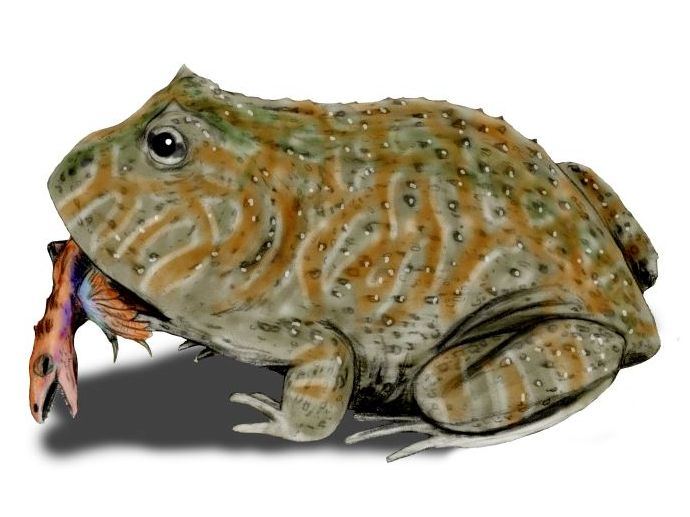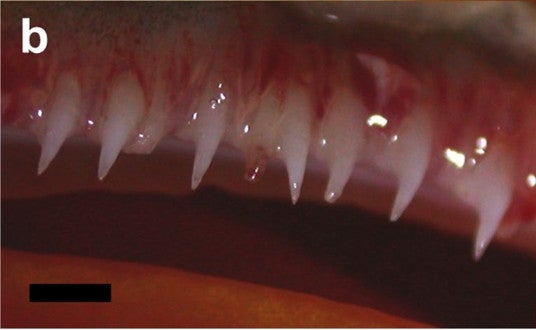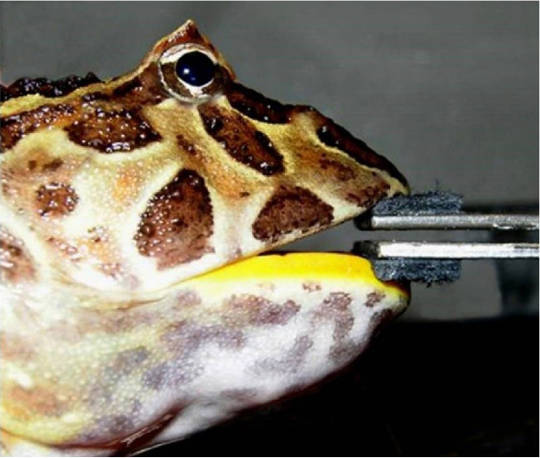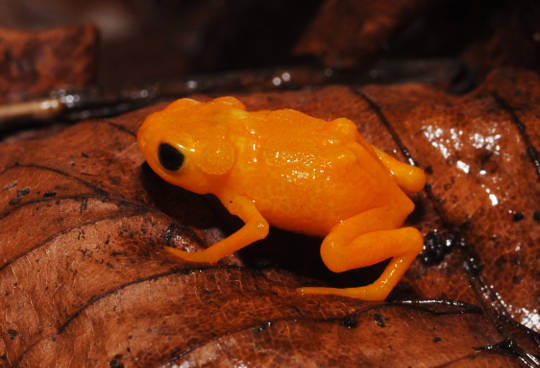This article was published in Scientific American’s former blog network and reflects the views of the author, not necessarily those of Scientific American

Beelzebufo. Credit: Nobu Tamura Wikimedia (CC-By-3.0)
Somewhere in late Cretaceous Madagascar, at least 66 million years ago, there lived a giant frog that could sink its teeth into small dinosaurs with the force of a tiger.
At least, that is according to a new study published in September in the journal Scientific Reportsthat models the bite force of the frog. We now call this frog, which had a head half a foot wide and probably an air of confidence to match, Beelezebufo (Bufo is the Latin word for toad. Beelzebub
On supporting science journalism
If you're enjoying this article, consider supporting our award-winning journalism by subscribing. By purchasing a subscription you are helping to ensure the future of impactful stories about the discoveries and ideas shaping our world today.
is not a nice person). What should perhaps give you additional pause is that there are frogs alive today with equally alarming teeth and respect-inspiring bites.
These frogs are most commonly called horned frogs. With mouths so large they have also been called “hopping heads”, or “Pac-man frogs”, they are capable of taking out other frogs (including their own mates), lizards, snakes, birds, and rodents. Here is the highly disturbing maw of one:

Scale bar = 1 mm. Credit: Lappin et al. 2017
Yes, that frog’s mouth is lined with fangs. FANGS. And if that weren’t enough, the authors of this study refer to an additional pair of “large and fully ossified odontoids”(which they actually call “fangs” in the paper), located somewhere else in the oral neighborhood, but not pictured in their paper. Shudder.
Of course, these teeth are unusual because most frogs and toads have weak jaws and rely only on their famous sticky tongues to grab prey. Although the horned frogs in the genus Ceratophrys – native to South America – do possess large and highly sticky tongues of their own, they have an additional dental insurance policy, if ya know what I’m sayin’.
We know about the bite force of these toads thanks to some brave scientists who persuaded these toads to bite down on a device called a “force transducer”, rather than their hands, like so:

Credit: Lappin et al. 2017
Using bite force measurements from eight variously sized specimens of Ceratophrys cranwelli, the scientists constructed a mathematical model to extrapolate what force frogs of various sizes may be able to apply during what the scientists referred to as -- I love this -- “prey dispatch”. Head width, it turned out, was the best predictor of bite force.
The largest frog in their sample generated a bite force of 33 Newtons (N). An apple, appropriately, generates about 1 N under Earth’s gravity, and 33 N will lift an object that weighs over seven pounds. Based on these models, it appears horned frogs can capture prey at least as big as they are.
But C. cranwelli is not the largest living horned frog. A museum specimen of a related species called C. aurita has a head nearly four inches wide, and the model predicts it could bite with a force of 497 N. Bench pressing 100 pounds requires about 445 N. Ouch.
Horned frogs can generate such pressures because their jaws are extremely short (giving more mechanical advantage) and their bones are rugged and fused. Toothless frogs usually possess bendy, unfused bones.
Today’s horned frogs, however, may pale compared to the nightmarish frogs of the past. Beelzebufo, whose largest known fossil has a head measuring over six inches across, could have exerted a jaw-dropping 2,213 Newtons, the scientists’ model calculated.
These numbers are plausible given extant predators’ abilities. A real snapping turtle with a four-inch head weighing more than 36 pounds generated a 657 Newton bite. Applying their model, a snapping turtle with a head as wide as the largest specimen of Beelzebufo would generate 2,042 Newtons.
Other scientists’ models project that a wolf’s bite maxes out at about 775 N, a lion’s at 2,024 N, and a tiger’s at 2,165 N.
It is not, however, at all clear that the biggest known Beelzebufo fossil corresponds to the largest possible Beelzebufo. The authors note that some of the largest fossils we have retain unfused head bones – possibly indicating they were not yet done growing.
Putting it all together, the scientists have no trouble suggesting that these extinct amphibians were capable of dining on small or young dinosaurs and crocodiles – and no doubt small or young costumed humans, had they been around.
In composing a Halloween post about frogs and toads, I could not neglect to mention the pumpkin toadlet, a heavyweight in the competition for World’s Most Adorable Frog.
.jpg?w=540)
Credit: Sandra Goutte
This little guy was the subject of a paper -- also published in Scientific Reports in September -- that explored the odd fact that, although the pumpkin toadlet calls its little heart out, no other pumpkin toadlets possess the actual ability to hear it. They have lost the parts of their inner ear that would permit that, the scientists discovered after extensive testing.
Why? They suggest two possibilities. The toads are highly poisonous, so perhaps there is no cost to making a racket even if they’re not longer benefitting from it. Or perhaps the very action of heaving their lungs and opening their mouths is a visual cue that performs the same service as sound.

Do not kiss the pumpkin toadlet, no matter how tempted you may be. Credit: Sandra Goutte
The pumpkin toadlet wishes you a Happy – and poison-free – Halloween.
References
Goutte, Sandra, Matthew J. Mason, Jakob Christensen-Dalsgaard, Fernando Montealegre-Z, Benedict D. Chivers, Fabio A. Sarria-S, Marta M. Antoniazzi, Carlos Jared, Luciana Almeida Sato, and Luís Felipe Toledo. "Evidence of auditory insensitivity to vocalization frequencies in two frogs." Scientific Reports 7 (2017).
Lappin, A. Kristopher, Sean C. Wilcox, David J. Moriarty, Stephanie AR Stoeppler, Susan E. Evans, and Marc EH Jones. " Bite force in the horned frog (Ceratophrys cranwelli) with implications for extinct giant frogs." Scientific Reports 7 (2017).